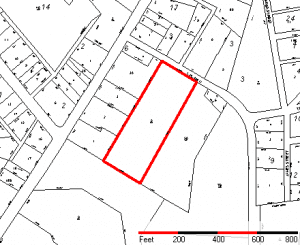 Every week we get questions about Phase I Environmental Site Assessments. A couple of the most common questions we answer are, “What is a Phase I Environmental Site Assessment and why do I need one?” It is usually posed by a prospective purchaser of a commercial property who is attempting to secure a mortgage—and the banker has made obtaining a Phase 1 Environmental Site Assessment a condition of the loan. It is not uncommon for the purchaser to have no idea of the reason why a Phase I ESA is needed (other than to secure the loan) or how long it takes to complete it. This article will discuss due diligence related to Federal environmental liability regulations, why your banker requires a Phase I ESA, and the time frame necessary to deliver a quality Phase I ESA.
Every week we get questions about Phase I Environmental Site Assessments. A couple of the most common questions we answer are, “What is a Phase I Environmental Site Assessment and why do I need one?” It is usually posed by a prospective purchaser of a commercial property who is attempting to secure a mortgage—and the banker has made obtaining a Phase 1 Environmental Site Assessment a condition of the loan. It is not uncommon for the purchaser to have no idea of the reason why a Phase I ESA is needed (other than to secure the loan) or how long it takes to complete it. This article will discuss due diligence related to Federal environmental liability regulations, why your banker requires a Phase I ESA, and the time frame necessary to deliver a quality Phase I ESA.
Federal Environmental Liability Regulations and Appropriate Due Diligence
Comprehensive Environmental Response, Compensation, and Liability Act
In 1980, congress passed the Comprehensive Environmental Response, Compensation, and Liability Act—otherwise known as CERCLA or Superfund. Through CERCLA, the Environmental Protection Agency (EPA) was given power to seek out those parties responsible for any release of contaminants and assure their “cooperation” in the cleanup. The courts have applied a strict liability standard under CERCLA. Liability is imposed regardless of fault and can be imposed retroactively (i.e., before CERCLA was enacted). The liability is also joint and several, meaning that liability for contaminants can be imposed regardless of relative contribution, including merely purchasing a property.
Brownfields Amendments to CERCLA
In 2002, Congress passed the “Small Business Liability Relief and Brownfields Revitalization Act” (Brownfields Amendments). These amendments created a new landowner liability protection from CERCLA. The Brownfields Amendments provided liability protection for bona fide prospective purchasers (“BFPP”) of brownfields properties.
To qualify as a BFPP, a person must:
- not be potentially liable for contamination on or at a property;
- acquire the property after January 11, 2002;
- establish that all disposal of hazardous substances occurred before the person acquired the facility;
- make all appropriate inquiries into previous ownership and uses of the property prior to acquiring the property;
- not be affiliated with a party responsible for any contamination.
The 2002 Brownfields Amendments added specific criteria for conducting All Appropriate Inquiry (AAI) which later became known as the AAI rule. The AAI Rule provides an escape from liability called the “innocent landowner defense,” but this defense can only be used to escape liability if “appropriate due diligence” was conducted prior to the acquisition of the property.
CERCLA allows that “appropriate due diligence” has been exercised only if a thorough investigation of the site’s current and former uses has been prepared. This investigation is the Phase I ESA.
Why your Banker Requires a Phase I Environmental Site Assessment Before Purchasing a Commercial Property
The question became, “How do you mitigate the risk that there is hidden contamination that is not discovered for which an investor, lender or new owner could become liable in the future?” With the  Brownfields Amendments, the AAI Rule became a means to protect against the risk of potential future discovery of contaminants. The AAI Rule does not mean that a new owner does not have to report and address contamination. Discovered contamination still has to be reported and possibly remediated.
Brownfields Amendments, the AAI Rule became a means to protect against the risk of potential future discovery of contaminants. The AAI Rule does not mean that a new owner does not have to report and address contamination. Discovered contamination still has to be reported and possibly remediated.
Banks have established safeguards and controls to limit exposure to potential environmental liability associated with real property. Environmental contamination, and its associated liability, may have significant adverse effects on the value of real estate and may, in certain circumstances, cause a lender to be held directly liable for the environmental cleanup of the property. The cost of such a cleanup may exceed, by many times, both the amount of the loan granted to the borrower, as well as the value of the property.
Each Phase I Environmental Site Assessment follows the same four-stage process:
- Records Review
- Site Reconnaissance
- Interviews
- Report Preparation
The goal of the Phase I ESA is to determine if there are any situations on the site that meet the definition of a Recognized Environmental Condition (REC). A REC is defined as the presence or likely presence of any hazardous substances or petroleum products in, on, or at a property.
A REC doesn’t necessarily mean that there is contamination, just that it is possible. The finding of a REC does not mean the banker will not approve a loan, but they may request further investigation of the REC to determine if there has been any environmental impact.
How long does it take to complete a Phase I Environmental Site Assessment?
The ideal time frame for completing a Phase I ESA is 30 days. However, it is not uncommon for the purchaser to learn of the requirement late in the due diligence process which then necessitates a much more rapid schedule with multiple environmental professionals simultaneously completing separate tasks. If RECs are identified, the due diligence timeline may have to be extended.
More Information
The ESA process is rigorously outlined by the American Society of Testing and Materials (ASTM). The Phase I ESA includes research on current and former uses of the land, collection of documents relevant to the property, and a non-invasive inspection of the site to determine the possibility of contamination on the property.
Feel free to contact us if you have any questions!
If you would like more information on Phase I Environmental Site Assessments, you can check out some of our other articles about Phase I ESAs:
Top 5 Reasons Banks Require Phase I Environmental Site Assessments
Is a Phase I ESA Necessary for Every Commercial Property Purchase?
How Much Does a Phase I Environmental Site Assessment Cost?
What are the Qualifications of a Phase I ESA Provider?

